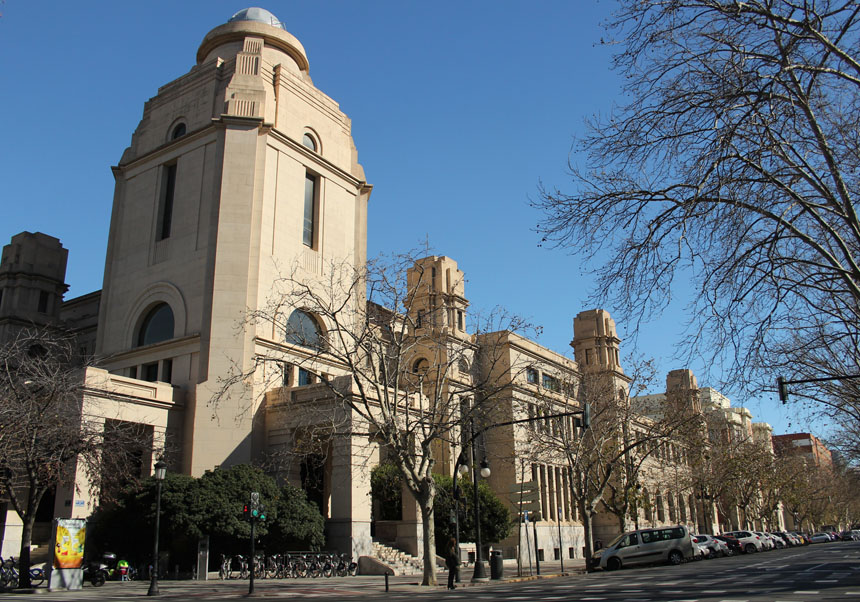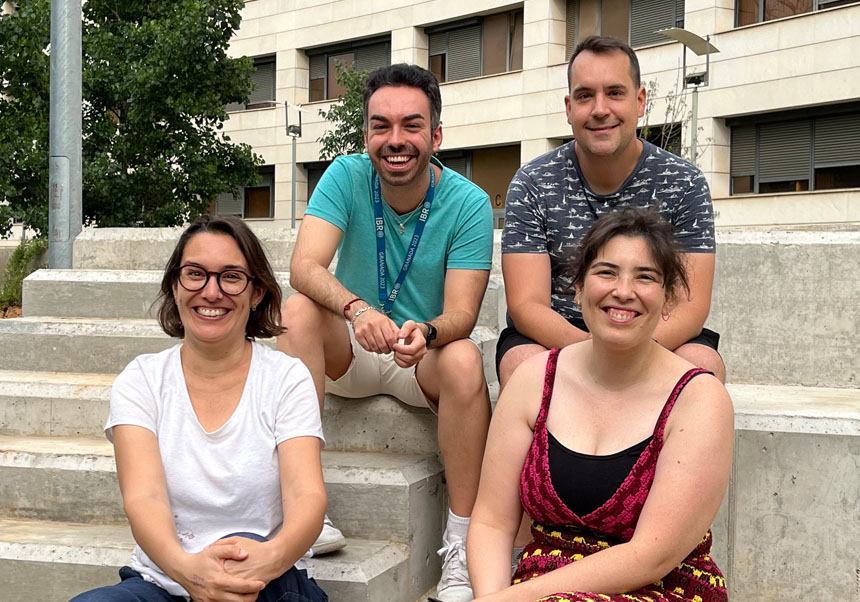Discovery of lichen microalgae capable of surviving the extreme conditions found on Mars
- Marketing and Communication Service
- Olga Denia Moreno
- June 17th, 2025

A study by the University of Valencia (UV) has shown that certain types of lichen-symbiont microalgae can survive under conditions similar to those found on the surface of Mars. These species' ability to produce oxygen and nutrients in harsh environments, as well as their significant biotechnological potential, makes them an interesting resource for the food industry, space agriculture, and the development of future human missions to Mars.
The project, named TREBOUXMARS, takes its name from a family of symbiotic microalgae extracted from lichen thalli, the Trebouxiaceae. Funded by the Generalitat Valenciana, the Spanish Ministry of Science, Innovation and Universities, and the European Space Agency (ESA), this work is the result of a collaboration between the SYMBIOGENE and PHOTOBIONTECH research groups, which are both based at the University of Valencia.
The team has simulated the environmental conditions of the Martian surface in the laboratory, and the results have shown that certain microalgae can survive under extremely harsh conditions, including exposure to the environment of space. Once extracted from lichen thalli, these symbiotic species can be cultured independently. They are capable of surviving and thriving under Martian conditions and can be used to produce resources to support a human presence on Mars.
“We are talking about organisms with a complex and highly adaptable metabolic repertoire that can be used in a variety of ways, both on and off the planet Earth. We already have a variety of microalgae that can continue to grow after being exposed to extreme environments. We have analysed their metabolomic and transcriptomic responses to different types of environmental stress, and we are now exploring the potential biotechnological applications of this”, explains Pedro Carrasco, professor of Biochemistry and Molecular Biology, researcher at the University Research Institute of Biotechnology and Biomedicine (BIOTECMED) and head of the PHOTOBIONTECH group.
“These eukaryotic, symbiotic cells have unique and novel biological characteristics. For instance, the membranes of their chloroplasts, mitochondria and cytoplasm do not denature and they can recover their original structure and function within a short time. We are studying this feature using cell biology methodologies”, explains Eva Barreno, emeritus professor of Botany and head of the SYMBIOGENE group at the Cavanilles Institute of Biodiversity and Evolutionary Biology (ICBiBE) of the University of Valencia.
The study forms part of Marta Pérez-Rodrigo’s doctoral thesis, which was co-funded by the ESA (IDEA I-2021-05232) under the framework of the PROMETEO/2021/005 project, GVA. The study has been presented at several scientific meetings, including the 2023 conference of the Italian Lichenological Society (SLI) in Verona, where it was published. More recently, it was presented at the 2024 Algae Symposium of the Spanish Society of Plant Biology (SEBP) in Barcelona, and in 2024 at The Fourth Lichen Photobiont Workshop in Gdansk (Poland), among others.
TREBOUXMARS now focuses on two key aspects: firstly, the cultivation of these symbiotic microalgae to produce oxygen and nutrients in the most severe environments, with a view to future human missions to Mars; and secondly, the exploration of the biotechnological potential of these species and their possible applications in pharmacology, the food industry or space agriculture.
The microalgae used in the study come from the Symbiotic Algae Collection of the University of Valencia (ASUV), created by the SYMBIOGENE group, which is dedicated to the cultivation and maintenance of microalgae isolated from lichens, using protocols and techniques developed by the research group itself.
The project has been funded by the Generalitat Valenciana (PROMETEO/2021/005: “Decline of epiphyte lichens and the symbiont microalgae across the Valencia Community: biomonitoring and genomic techniques applied to biodiversity conservation”), the Spanish Ministry of Science and Innovation (PID2021-127087NB-I00: “Las microalgas verdes verdes simbióticas como factores clave de las respuestas de los líquenes a los cambios ambientales” (Symbiotic green microalgae as key factors in lichen responses to environmental change), and the European Space Agency (IDEA I-2021-05232: “Trebouxiaceae as novel candidates to survive in Mars”).
The SYMBIOGENE-GIUV2016-330 group (Symbiosis, Diversity and Evolution in Lichens and Plants: Biotechnology and Innovation) is led by Eva Barreno, and PHOTOBIONTECH-GIUV2016-274 (Biodiversity and Biotechnology of Lichen Microalgae), by Pedro Carrasco.
Further information:















